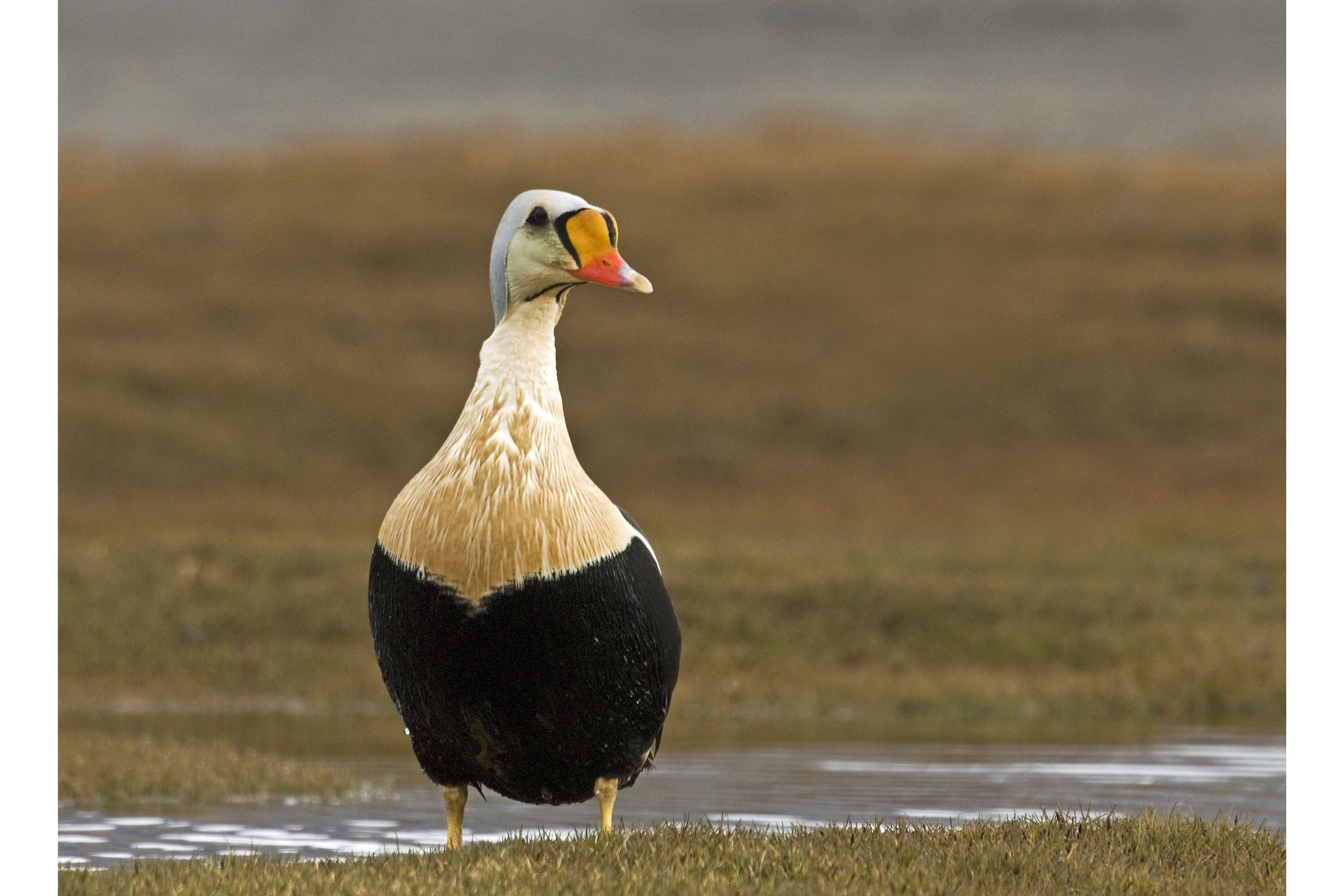King eider
(Somateria spectabilis)

Description
The king eider (Somateria spectabilis) is a large sea duck that breeds along Northern Hemisphere Arctic coasts of northeast Europe, North America and Asia. The birds spend most of the year in coastal marine ecosystems at high latitudes, and migrate to Arctic tundra to breed in June and July. They lay four to seven eggs in a scrape on the ground lined with grass and down. The king eider is a large sea duck, measuring 50–70 cm (20–28 in) in length with a wingspan of 86–102 cm (34–40 in). Males are, on average, heavier than females, with a mean weight of 1.668 kg (3.68 lb) for males and 1.567 kg (3.45 lb) for females. An individual bird's mass can vary considerably from season to season from as little as 0.9 kg (2.0 lb) to as much as 2.2 kg (4.9 lb). Like all eiders, the species is sexually dimorphic; the male is slightly larger and, in breeding plumage, much more colourful than the female. The male is unmistakable with its mostly black body, buff-tinged white breast and multicoloured head. The head, nape and neck are a pale bluish grey. The cheek is pale green. The bill, separated from the face by a thin black line, is red with a white nail and a large, distinctive yellow knob. Some tertials are curved up and form "spurs" along the back. The female (occasionally colloquially referred to as a "queen eider") is a warm brown colour overall, slightly paler on the head and neck. The feathers on her upperparts and flanks are marked with blackish chevrons, while those on her neck and head bear fine black streaks. She has a buffy spot at the base of her bill and a buffy eye ring which extends into a downward curving stripe behind her eye. Her bill is variously described as black or grey, and her legs and feet are greenish grey. Juvenile birds are greyish brown. Late in their first autumn, young males moult into a darker plumage, with white on the breast and rump; it takes them three years to achieve full adult plumage. The king eider is circumpolar, found throughout the Arctic. It breeds on the Arctic coast of Alaska, Canada, Greenland, Svalbard and Russia, using a variety of tundra habitats. It winters in arctic and subarctic marine areas, most notably in the Bering Sea, the west coast of Greenland, eastern Canada and northern Norway. Wintering birds can form large flocks on suitable coastal waters, with some flocks exceeding 100,000 birds. It also occurs annually off the northeastern United States, Scotland and Kamchatka.
Taxonomic tree:







